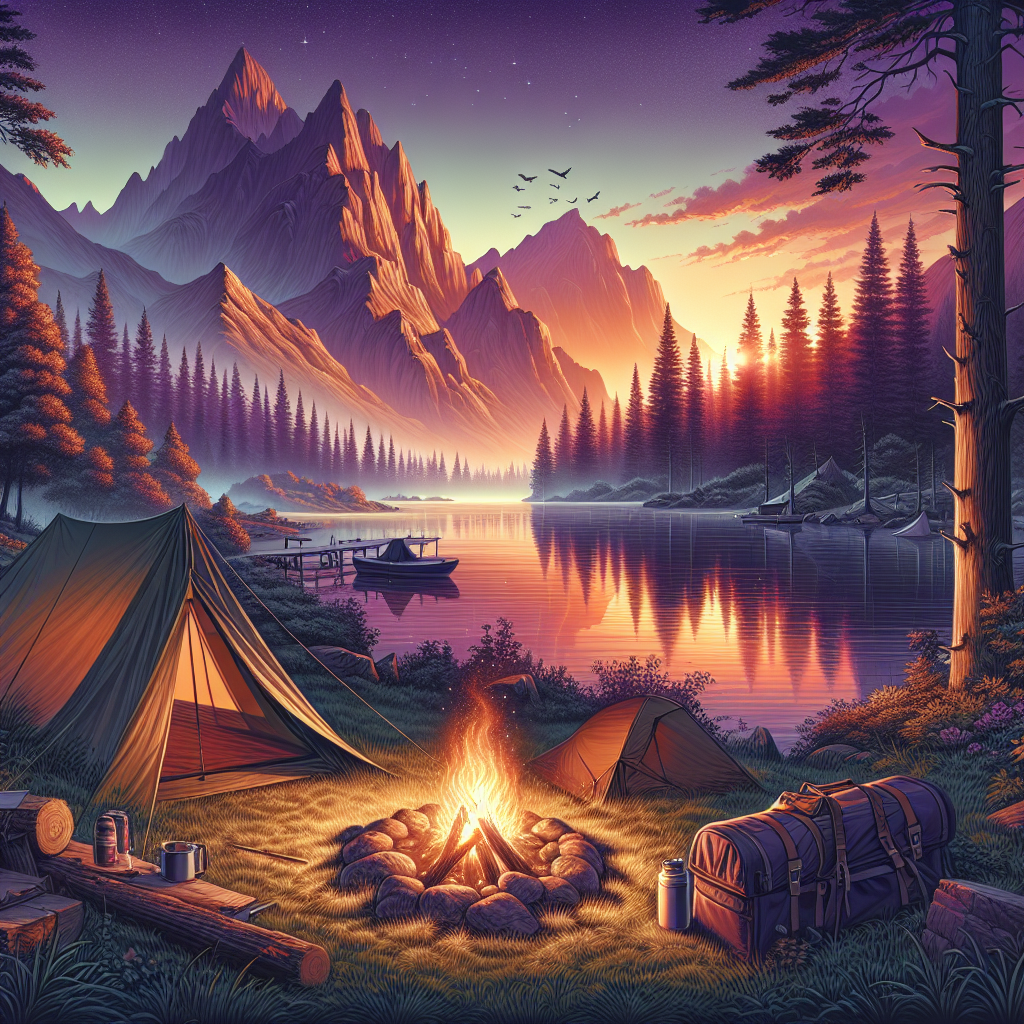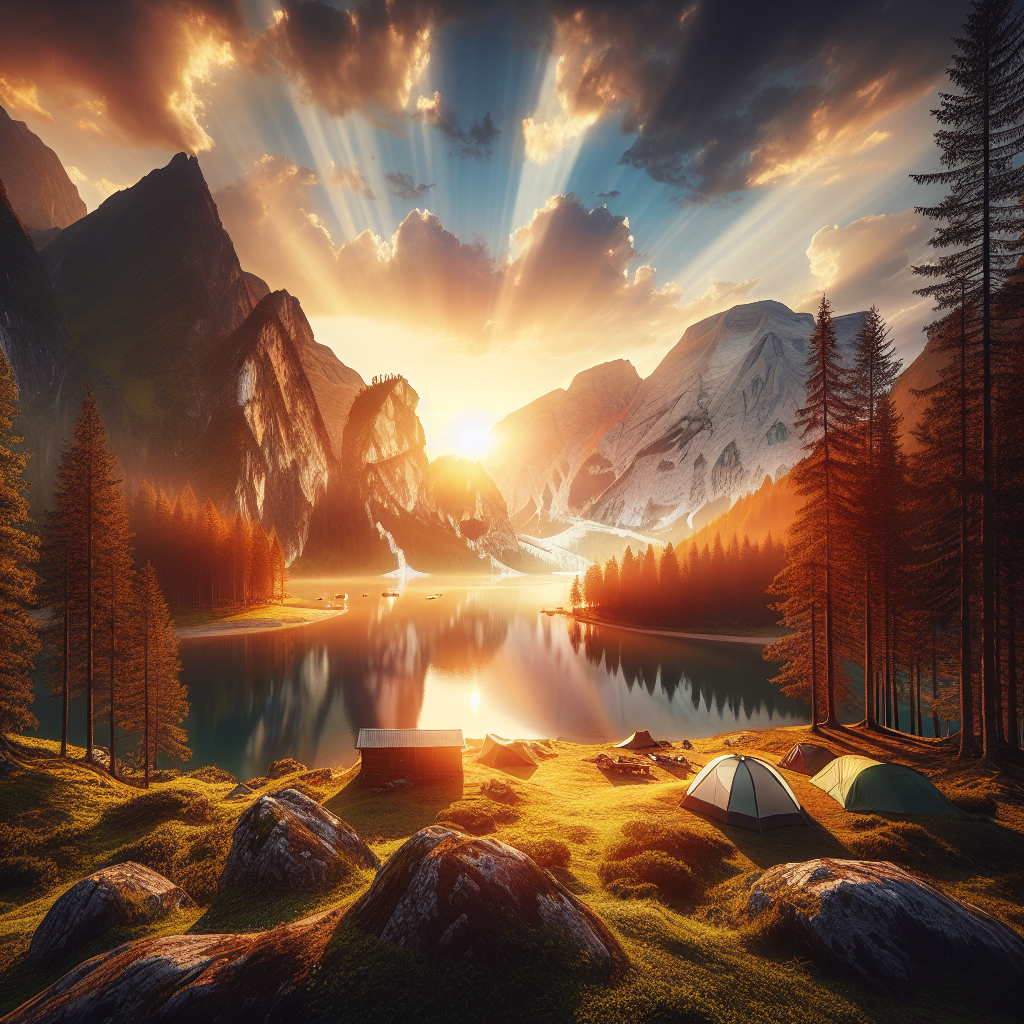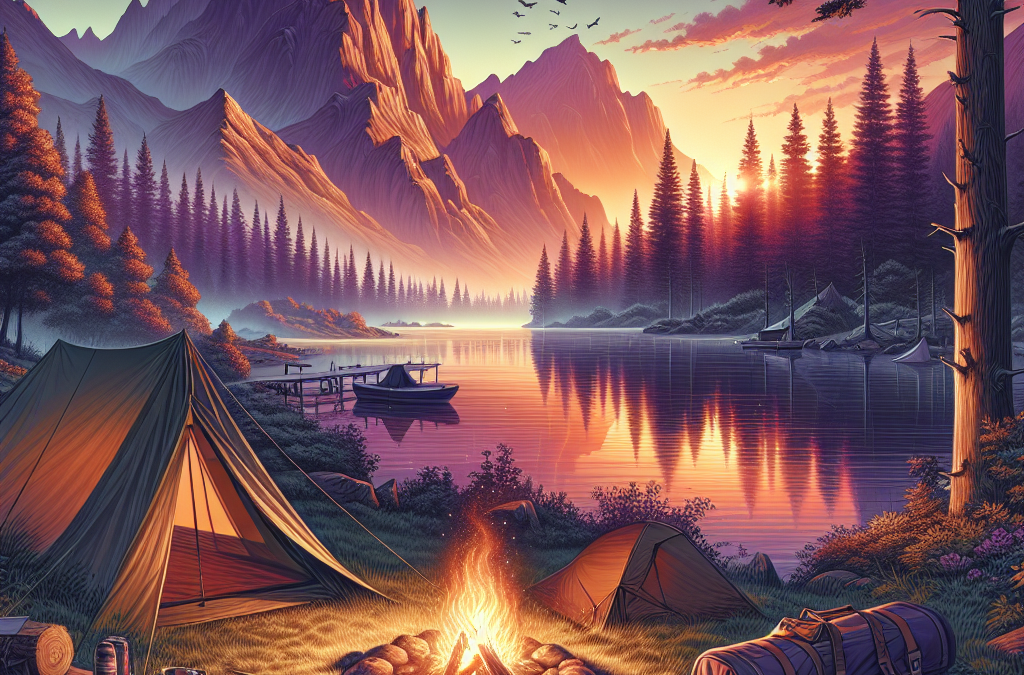Venturing into the great unknown edges of wilderness and embarking on a photo capturing exercise is no small feat. Your dear friends at TrailTrekTribe are eager to share some precious insights on how to polish your camping photography skills, to help you create a stunning visual documentary of your outdoor adventures. Nature’s beauty is in its wild, untamed spirit and our hope is to assist you in capturing each exhilarating moment, from the morning dew clinging gently to the grass, to the vibrant hues of an evening sunset at your campsite. At TrailTrekTribe, we understand your enduring passion for the great outdoors and are committed to nurturing this same spirit within our community, while consistently promoting responsible and sustainable exploration. Let this article be your guide to capturing the breathtaking stillness and sheer majesty of life’s greatest adventure – the great outdoors.

Understanding The Basics of Photography
Good camping photography starts with understanding the basics of photography itself.
The rule of thirds
Firstly, you should familiarize yourself with the rule of thirds. It’s a fundamental principle that aids in achieving balanced and appealing compositions. Picture your frame divided into nine equal parts by two equally spaced horizontal and vertical lines. You should aim to place your subject or key elements along these lines or at their intersections.
Understanding light
Understanding light is another critical aspect of photography. Whether it’s golden hour’s warm hues, harsh midday sun, or the soft glow of a campfire, different types of light can drastically change the mood and look of your photos. Learn to work with what’s available and constantly experiment to create stunning images.
Proper shutter speed and aperture settings
Learning about shutter speed and aperture settings can significantly improve your photos. Fast shutter speeds help ‘freeze’ action while slower speeds can convey motion. Aperture controls the depth of field, affecting the sharpness of your background and foreground.
Knowing your subject
Lastly, knowing your subject is key. Whether it’s a stunning sunset, a fast-paced wildlife action, or a candid human moment, understanding your subject allows you to anticipate and capture the best possible photo.
Choosing The Right Equipment
A good camera and equipment can make the difference between a mediocre and an amazing camping photograph.
Selecting the right camera
To get started, camera selection is crucial. As someone who enjoys both adventure and photography, a durable and lightweight camera with good image quality is essential. Further, the right camera should also satisfy your specific needs, which could range from landscapes to wildlife or astrophotography.
The importance of a good lens
A good lens is as essential as a good camera. Wide-angle lenses are great for landscapes and astrophotography, while telephoto lenses excel in wildlife photography. It’s also necessary to have a fast lens, particularly for low light conditions you might encounter while camping.
Tripods and other necessary accessories
A sturdy tripod can help stabilize your camera for sharp and focused images, especially for long exposures. Other useful accessories include cleaning kits to maintain your equipment, additional memory cards, and a reliable camera bag.
Equipment care while camping
While camping, being mindful about equipment care is vital. Protect your gear from weather elements by using rain covers and storing in a dry place. Keeping your camera and lenses clean is essential to avoid spots on your images.
Scouting and Planning Your Shots
Planning your shots can bring a level of consistency and predictability to your photographs, making them more compelling.
Understanding your camping location
Before setting off, ensure that you have a strong understanding of your camping location. Research the best spots for sunrise, sunset, and interesting landmarks that you might want to capture.
Predicting weather and light conditions
Tools that predict weather and light conditions can significantly aid your planning. They help you anticipate both challenges and opportunities that these conditions may bring.
Using technology for planning your shots
Modern technology, such as photo planning apps, can help identify the ideal time and location for specific shots. Make use of such tools to plan your shots to capture the best possible photographs.
Portrait Photography in the Wilderness
Your camping companions can make for interesting and engaging subjects in your camping photographs.
Capturing human subjects
Aim to capture human subjects in their natural and relaxed state. Candid moments often make for the most compelling photos.
Utilizing natural light for portraits
For campsite portraits, using the golden hour light can give your subjects a magical glow. Always be mindful of the direction and intensity of your light source and use it effectively.
Perspective and framing in portrait photography
Experimenting with perspective and framing can drastically change the dynamic of your portrait images. Aim to use the natural surroundings to enhance your subject.
Tips for candid portraits in camping scenarios
Candid portraits captured during activities like hiking, cooking or setting up camp often capture the authenticity and honest emotions that staged portraits may not.

Landscape photography in a Camping Setting
Camping allows you to immerse yourself in the landscape, giving you ample opportunities to capture remarkable images.
Understanding landscape composition
Understanding landscape composition is crucial. Look for elements like leading lines, patterns, and color contrast to make your photos more appealing.
Ideal times for landscape shots
Dawn and dusk, known as golden hour, are often the best times for landscape shots due to the soft, warm light and dramatic skies. Similarly, taking photos immediately after a storm can also yield stunning results.
Scaling, framing and asymmetry
Adding a human element can put the enormity of the landscape into perspective. Using natural frames like trees or rock arches can direct focus to your primary subject, and asymmetrical compositions can often be more dynamic and exciting.
Working with weather for stunning landscape shots
Inclement weather can often create fantastic photo opportunities. Learn to work with the conditions rather than against them, and you could end up with some truly unique shots.
Capturing the Night Sky
Camping away from city lights gives you a perfect opportunity to try astrophotography.
Understanding astrophotography
Astrophotography is about capturing the celestial bodies and phenomena. To begin, you will need a sturdy tripod, a wide-aperture lens, and a way to safely take long-exposure shots without moving the camera.
Shooting star trails and Milky Way
Shooting star trails involve long exposure shots to show the apparent motion of stars in the night sky. Capturing the Milky Way involves finding a dark sky and using a wide-angle lens to get as much of the sky in the frame as possible.
Dealing with low light conditions
Astrophotography requires dealing with extremely low light conditions. Increasing the ISO, opening up the aperture, and using slower shutter speeds can help.
Long exposure for night photography
Using long exposures allows more light to hit the camera sensor, revealing stars and constellations that we can’t see with the naked eye. This can help you capture stunning images of the night sky.
Wildlife Photography during Camping
Camping trips can provide exciting opportunities for wildlife photography, but such endeavors require a good understanding of animal behavior and a lot of patience.
Safety considerations
Always put safety first when photographing wildlife, for yourself and the animal. Keep a respectful distance and never approach or attempt to feed wildlife.
Techniques for capturing wildlife
Use a telephoto lens to capture wildlife from a distance. Try different techniques like freezing action with a fast shutter speed or creating a sense of motion with a slower speed.
Patience and respect for nature
Wildlife photography requires a lot of patience. It may involve waiting for hours to capture a perfect shot, but always remember to respect nature and never disturb animals for the sake of a picture.
Understanding animal behavior for better photos
The better you understand animal behavior, the more likely you’re to anticipate their actions, leading to a more successful wildlife photograph.
Editing Your Camping Photos
Once you have captured your camping photos, the next step is to edit them to enhance and reflect your vision.
Post-processing basics
Basic editing involves adjusting exposure, contrast, and color. Cropping and straightening your image can also improve composition.
Stylizing your images
Adding a personal style to your images can make them stand out. This could be through tones, colors, or the use of black and white.
Software applications for editing
There are several software applications for editing photos. Pick one that suits your needs and comfort level. Learning to use these tools can significantly enhance your images.
Importance of preserving original details
While editing, it is also crucial to preserve the original quality and character of the photos. Avoid over editing which might make your images look unnatural.
Safety Precautions while Camping
While chasing the perfect shot, do not forget safety precautions.
Taking care of your equipment
Ensure that your equipment is always secure and protected from elements, especially when not in use.
Personal safety while chasing the shot
Your personal safety comes first. Wear appropriate clothing and footwear, stay aware of your surroundings, take note of the weather, and make sure someone knows your whereabouts.
Respecting the environment
Remember, we are visitors in nature’s territory, so respect the environment. Follow the ‘Leave No Trace’ principle by keeping things clean and not harming wildlife or plants.
Adhering to Adventure Ethics on photographing nature
Stay ethical while photographing. Don’t stress wildlife, alter the landscape, invade someone’s privacy, or anything that can negatively impact the environment or society.
Sharing and Storing Your Camping Adventures
Once you have captured and edited your photos, the next step is to share and store them.
Digital storage options
Always keep a backup of your images. Explore various digital storage options, including online cloud services, external hard drives, and memory cards.
Creating a portfolio of your adventures
A portfolio can help you showcase your best work. Organize your photos by themes or trips to create a compelling narrative of your adventures.
Online platforms for sharing your camping photos
There are many online platforms where you can share your camping photos, gain visibility, receive feedback, and connect with a community of fellow enthusiasts.
Print options and showcase
Consider printing your photos. It can be gratifying to see your photos in print. Plus, they make great gifts and decorations around your place.
Remember, camping photography is a journey filled with learning and joy. Enjoy the process, be patient, and always respect the nature around you. At the end of the day, no photo is worth harming the environment or yourself. Happy Clicking from the TrailTrekTribe!

